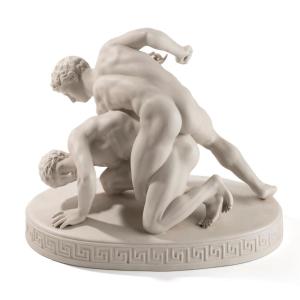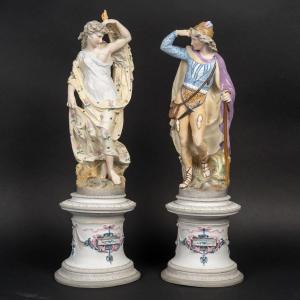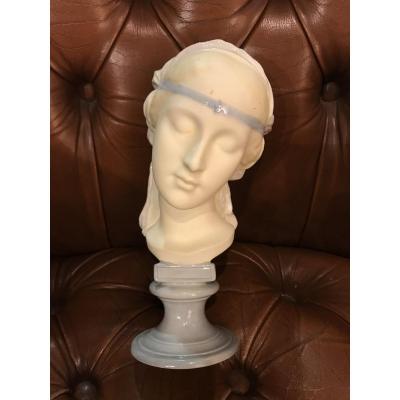The figurine, created in the mid-19th century, was designed by French sculptor Charles Cumberworth, who produced several Parian figures for Copeland. This piece beautifully captures the sentimental essence of Virginia, celebrated for her purity, innocence, and deep connection to nature. She is depicted feeding pigeons at her feet, holding small grains in her hem. In her hand, she carries a basket full of flowers and fruit.
The Copeland company, originally known as Spode, has a rich history in producing fine ceramics, particularly Parian ware. In the early 1840s, under the management of William Taylor Copeland, the company developed Parian ware, a type of unglazed porcelain designed to imitate the appearance of marble. This innovation allowed for the mass production of sculptures and busts that resembled fine marble at a more accessible price.
In 1866, Copeland was appointed as the china and glass manufacturer to the Prince of Wales, the future King Edward VII. This prestigious appointment underscored the company's reputation for quality and excellence in ceramic production.
Copeland collaborated with prominent sculptors of the time, such as John Bell and Hiram Powers, to create Parian ware figures based on their works. These collaborations resulted in highly detailed and artistic pieces that were popular among collectors and art enthusiasts.
The firm remained a significant player in the British ceramics industry, eventually reverting to the Spode name in the 1970s. The company's products are particularly appreciated by collectors of antique porcelain for their uniqueness and exquisite detailing.
Dimensions:


















































 Le Magazine de PROANTIC
Le Magazine de PROANTIC TRÉSORS Magazine
TRÉSORS Magazine Rivista Artiquariato
Rivista Artiquariato